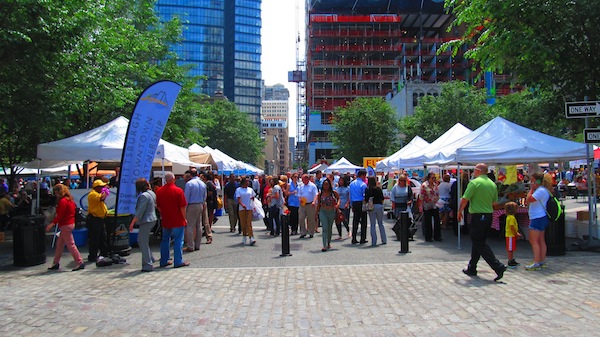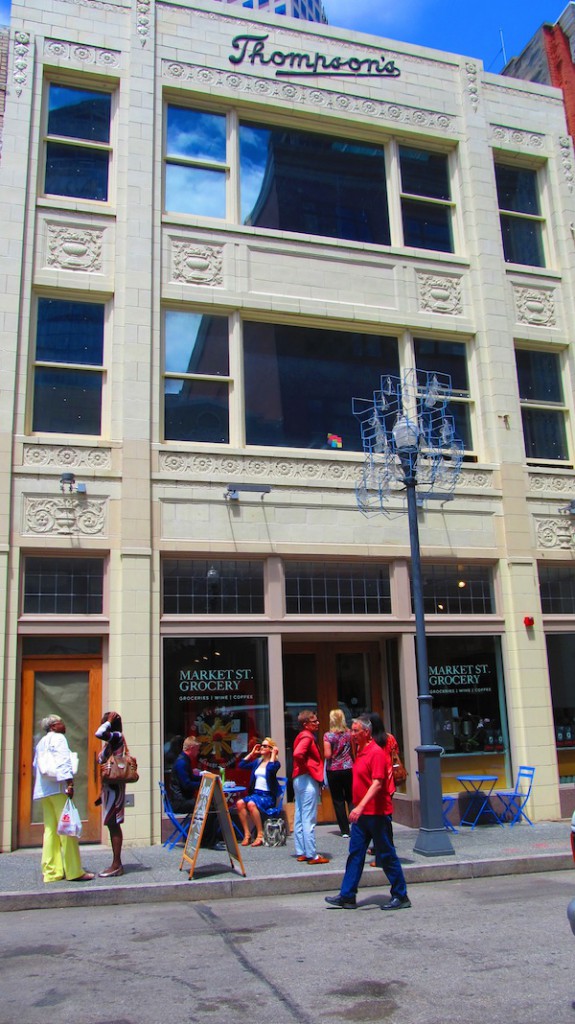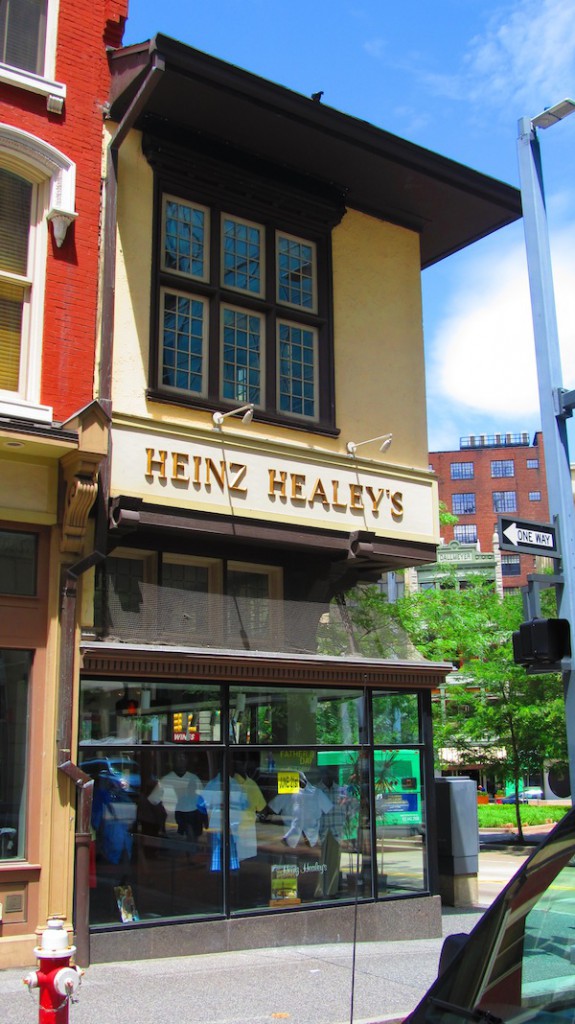
Market at Fifth: PHLF’s Greatest Saves
PHLF turned 50 on September 30, 2014. Intern Lauren Van Zandt, a Public History graduate student at Duquesne University, is sharing the stories of some of PHLF’s “Greatest Saves.” Help us celebrate 50 years of Pittsburgh renewal with a donation to our 50th Anniversary Fund. Click here.
When I started working on this article I thought I would just drop in on my interview subjects during lunch on a Thursday. Big mistake––as anyone who’s ever been to Market Square on a summer Thursday would have warned me. In between the profusion of lunching workers, farmer’s market browsers, and photo-taking tourists, the whole area was packed. And, of course, my interview subjects were completely occupied with customers. One has to wonder if fifteen years ago, as stakeholders and city government battled over the future of the area surrounding Market Square, if anyone could have envisioned this kind of outcome for such a depressed and neglected area.
In 2000 the city proposed a $522-million scheme to transform 5½ acres of downtown into Market Place at Fifth and Forbes, a modern retail center anchored by big-box stores and national retailers. Had the plan gone through, over sixty historic buildings would have been razed and the character of Downtown would have been irrevocably altered. With the aid of community stakeholders and the National Trust for Historic Preservation, PHLF fought this demolition-as-revitalization approach and began working on an alternative.
Putting historic preservation principles into action, PHLF acquired three buildings at the corner of Fifth Avenue and Market Street in 2007 (160 Fifth Avenue, 489 Market Street, and 491 Market Street). These buildings became Market at Fifth, a mixed-use development that helped to revitalize and define the character of Market Square. PHLF utilized private funding and over $600,000 in tax credits to remodel and restore the buildings, and green technology to achieve a LEED-Gold rating. Nettleton Shoes and Heinz Healey’s Men’s Apparel now occupy the lower floors of the three original buildings, with market-rate apartments above. In addition, PHLF purchased the former Thompson’s Restaurant building in 2008 and renovated it, thanks to funding from the Allegheny Foundation, the Commonwealth of Pennsylvania’s Redevelopment Assistance Capital Program grant to the City of Pittsburgh, and Allegheny County’s Community Infrastructure and Tourism Fund. After much anticipation, the Market St. Grocery opened in April 2015 on the main floor of the Thompson Building, giving Downtown its only grocery––plus Gaby et Jules bakery, and a wine shop and bar.
After picking a less busy day to visit, I was able to speak with Scott Kresge of Nettleton Shoes. Mr. Kresge’s family has owned the business since 1929; it was located in the Union Trust Building for over seventy years as well as a brief stint in One Oxford Centre. Mr. Kresge has noticed a number of advantages to his Market Street location: the biggest is the boost that foot traffic and street entrances have for generating business. He also appreciates the “warmer feeling” of a small-scale Downtown and the unique architectural features the c. 1870 building affords. Mr. Kresge specifically requested that the historic brick wall in his store remain uncovered. Not only does it provide character to the store’s interior, but it becomes the photo backdrop for Mr. Kresge’s beautiful shoes!
Interviewing is hard work, so I popped into the new Market St. Grocery to refuel. There were a number of tempting breakfast options that morning (I’ll definitely be coming back to sample the French toast), but in the end I could not resist the call of the rainbow-hued macarons from Gaby et Jules. I had ambitions of bringing them home to take photos for the article, but I could only wait for twenty minutes before eating them.
I was also able to speak with Chas Schaldenbrand, manager of Heinz Healey’s. The store’s location on Fifth Avenue and setting has been a great attraction for clientele. The walls of windows are a big draw, showing off Heinz Healey’s menswear offerings and drawing in customers. Being Downtown has brought the store to its suit-wearing clientele, and customers appreciate the historic character and context of the 1908 building rather than a more modern setting.
While interning a PHLF, I’ve heard the phrase “human scale” mentioned a lot when talking about Downtown. As I walked home from Market Square munching on my macarons, I think I finally started to really get what it meant. Surrounded by towering skyscrapers, the historic buildings of Market Square are intimate and inviting in a way in which the monumental new architecture just can’t compete. As Downtown attracts more and more business, I hope that property owners and developers contemplating the next big tower remember that the human scale and historic context have tremendous value.




